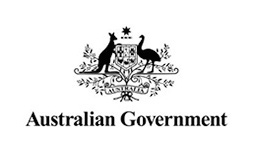The Mechanobiology of Microtubules: Understanding how Cells Survive Confined Spaces

Dr Samantha Stebhens
ARC Future Fellow and IMB Fellow, Institute for Molecular BioScience, The University of Queensland
Cells in living organisms navigate highly crowded three-dimensional environments, where their coordinated migration provides the driving force behind developmental and homeostatic tissue maintenance. Mechanical forces are important for cells to move and function in normal and diseased contexts. Most work focuses the role of the actin cytoskeleton. We now reveal that microtubules also play key roles in sensing and responding to mechanical cues. Microtubules are damaged by mechanical force, and in response they are actively repaired and become more flexible and resistant to breakage. Mechanical forces are felt across the lattice, effectively communicating the biophysical forces of the surroundings to intercellular structures mechanically linked to microtubules. In addition, microtubules sequester key upstream actin-regulatory factors, to ensure appropriate timing of release and activation of contractile forces to facilitate cell shape changes and movement. Thus, localized mechanochemical tuning mechanisms are necessary to ensure that microtubules are locally reinforced in areas of high mechanical load in both space and time. Our understanding of the mechanisms that govern the organization and mechanochemical tuning of microtubule properties in 3D in vivo systems, is not well understood. We explore the adaptive role that the microtubule cytoskeleton plays in facilitating cell shape plasticity, matrix remodeling and resistance to compression during migration in 3D hydrogels. We apply these findings to understand how cancer cells exploit this to spread to distal tissues and the role of the mechanoenvironment in metastatic disease and therapy resistance. To do this- we utilize cutting-edge methodology including microfluidics, novel light sheet microscopy, biosensors, and quantitative imaging methods in combination with patient-derived cell and 3D hydrogel models to recapitulate the 3D microenvironment.
Biography
Dr Stehbens is a cell biologist with an interest in understanding the fundamental mechanisms that regulate cell adhesion and the cytoskeleton. She has made key contributions to the fields of quantitative microscopy, cell motility, adhesion and the cytoskeleton with publications spanning multiple fields from ion channels in brain cancer, to growth factor signalling and autophagy. Her research group aims to understand how cells integrate secreted and biomechanical signals from their local microenvironment to facilitate movement and survival. They have uncovered a novel role for the microtubule cytoskeleton in protecting cells from rupture during cell migration in 3D cell migration and invasion. Using patient-derived tumour cells, coupled to genetic alteration and substrate microfabrication, they use state-of-the-art microscopy to understand the fundamental mechanisms of cell migration with the aim of understanding how to better prevent metastasis.


